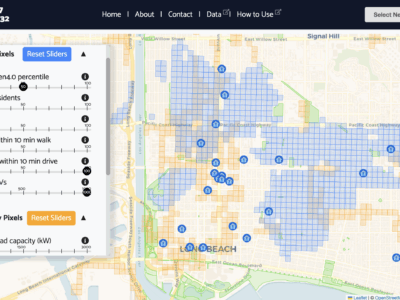White paper released today on how farmers and ranchers can reduce greenhouse gas emissions
 What can California’s farmers and ranchers do to reduce greenhouse gas emissions? “Room to Grow: How California Agriculture Can Help Reduce Greenhouse Gas Emissions,” a new white paper released today by UC Berkeley/UCLA Schools of Law, the California Attorney General’s Office, and Bank of America, provides some answers.
What can California’s farmers and ranchers do to reduce greenhouse gas emissions? “Room to Grow: How California Agriculture Can Help Reduce Greenhouse Gas Emissions,” a new white paper released today by UC Berkeley/UCLA Schools of Law, the California Attorney General’s Office, and Bank of America, provides some answers.
California agriculture is a huge industry, generating $36 billion in annual profit and providing hundreds of thousands of jobs and billions in tax revenue. But impacts from climate change pose a unique threat to the industry, including changed growing seasons, flooding, droughts, pest invasions and extreme temperatures. Some of the most lucrative crops, such as almonds and wine grapes, may be wiped out in parts of the state altogether. That’s right, “Sideways 2: The Next Generation” may end up taking place in Seattle.
Besides adapting to these changes, which is critical, the industry can help itself (and potentially save money in the process) by reducing its greenhouse gas emissions and offsetting emissions elsewhere by generating renewable energy from agricultural byproducts. In the short-run, farmers can optimize and reduce their use of synthetic fertilizers, which contribute a key greenhouse gas called nitrous oxide (some of you non-farmers may be familiar with this “laughing” gas from the dentist’s office and Grateful Dead concerts). And dairy farmers can reduce methane emissions from cows by improving their diet and finding ways to lengthen the productive life of livestock to get more milk with fewer emissions.
In the long-run, the industry will need some serious investment, both public and private, in on-farm and university-based research to hone in on proven, cost-effective practices and technologies that reduce emissions from the over four hundred crops produced in this state.
Another promising (and profitable) avenue for farmers involves generating renewable energy from agricultural byproducts like methane from livestock manure lagoons and biomass from excess plant material. But the burning of these byproducts in on-farm internal combustion engines to produce electricity creates localized air pollution in some of the most-polluted regions in the state, such as the Central Valley. As a recent Los Angeles Times article detailed, these renewable energy generators have been expensive and controversial and have run afoul of local air permitting regulations.
So what are the solutions? Agriculture leaders insist that regulators should study the lifecycle impacts of these renewable generators. They believe that the overall impact is a net reduction in pollutants from reduced “dirty” energy consumption. They also argue that regulators enforce standards inconsistently across jurisdictions and have failed to clarify and streamline some regulations. Regardless of the merits, agricultural leaders will have to work with state and federal officials and local air districts to negotiate a compromise that will bring more certainty to the process while protecting air quality in the most-polluted areas of the state.
Meanwhile, the state government can help promote investment in these technologies by improving the “feed-in tariff” program, which provides payments to renewable energy generators for electricity that they feed into the grid. A higher rate of payment would stimulate more investment in on-farm renewable technologies, as would stronger direction from the state to utilities to simplify and speed up the process of connecting these technologies to the grid.
And finally, as consumers, we can do our part by shopping for “climate-friendly” food in order to create a strong market and incentives for farmers. Examples would include food produced with optimal levels of organic fertilizers and on-farm renewable energy and milk and meat that that comes from methane-minimizing livestock operations.
One last note about the white paper: it was based on a September workshop we held with farmers, ranchers, academics, and agricultural leaders from around the state. It’s part of an ongoing series of workshops on business and climate change that is sponsored by Bank of America and implemented by the environmental law programs at UC Berkeley and UCLA. You can download other papers in the series from this website, and the agriculture white paper can be downloaded here.
Bon appetit!
Reader Comments
One Reply to “White paper released today on how farmers and ranchers can reduce greenhouse gas emissions”
Comments are closed.






As a Californian, thank you for this very informative and important post!
Also, I just discovered the article you posted about a year ago concerning the Dust Bowl. Since you have special expertise in this area, and my webpage http://dustbowlpoetry.wordpress.com is about exactly that topic, I would be glad for you to visit and add some comments from your perspective.
Thanks for bringing attention to these issues–I just showed part of Inconvenient Truth to my students at the college.